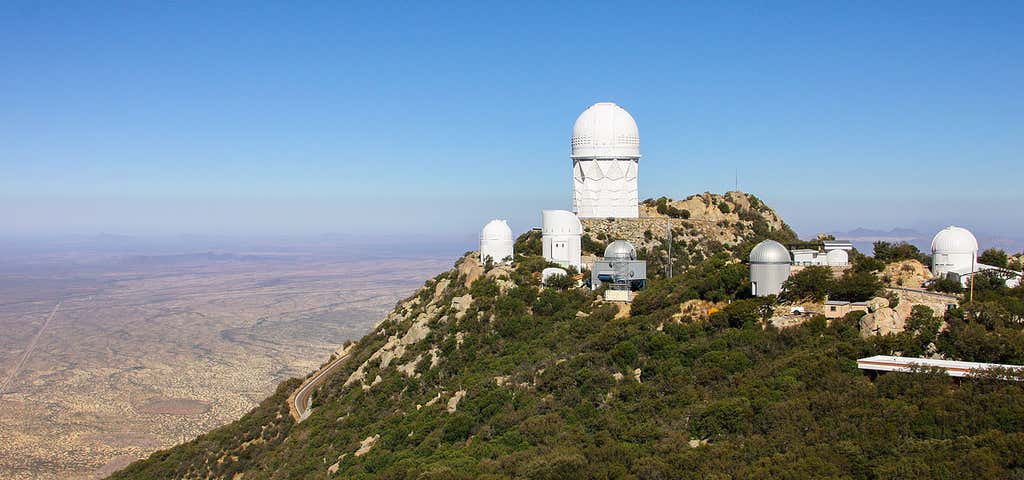The Sonoran Desert is a special place. Not only is it stunningly beautiful, but it also happens to be the native habitat for the saguaro cactus—it's the only place in the world where you can see wild saguaro grow. These incredible plants can grow up to 40 feet tall and live 150 years. Plus, the saguaro blossom is the state wildflower of Arizona. Needless to say, if you visit Tucson, it won't be hard to spot one of these tree-like giants and marvel at its beauty. But it's not just the cactus that make the Sonoran Desert so memorable. With its clear weather and dark skies, the desert is also known for some of the best stargazing in the country. And on this trip, you'll get to experience the best of both—saguaros by day and stars by night.
The main feature at Kartchner Caverns State Park is the 2.4 mile-long living limestone cave. Careful management and some fancy equipment (like air-lock doors and misting machines) have gone into preserving the passageways and tunnels, so the public can enjoy guided tours of the caverns for years to come. As you explore, pay attention to the cave formations, also called speleothems. These are created from calcite-rich water as it drips, flows, seeps, and condenses inside the cave. You can also see one of the world's longest "soda straw" stalactites, which stands just over 21 feet tall. Above ground, you'll find wildlife, campgrounds, and lots of hiking trails, but stick around after the sun sets for some stellar stargazing. The International Dark Sky Association (headquartered in Tucson) has designated Kartchner Caverns as a silver-tier dark-sky park, and amateur astronomers from all over bring their telescopes to take advantage of the incredible views.
Another park that has become popular with amateur astronomers is Oracle State Park. This wildlife refuge is set in the northern foothills of the Santa Catalina Mountains and offers unobstructed and unpolluted views of the night sky. And while you may not need a telescope to admire the Milky Way and various other constellations, Oracle is one of the best places to make excellent use of your stargazing gear. It's worth a visit during daylight hours as well, especially to check out the historic Kannally Ranch House. Built in the 1920s, the house now serves as a museum and visitor center for the park, complete with a gift shop, period furnishings, and old photography.
If you really want to see deep into the universe, head to the Mt. Lemmon SkyCenter Observatory. The SkyCenter is notable for two reasons: Its unique location at the top of Mt. Lemmon (Mt. Lemmon's summit is referred to as "sky island" due to how tall it is compared to the surrounding flat terrain) and it's home to two of the largest telescopes in the Southwest. The SkyCenter offers day tours, which last about two hours, and night tours. These night tours occur Thursday through Sunday and last about five hours. They include an astronomy lecture, dinner, stellar sunset views, and a guided navigation of the night sky. For both the day and night tours, we recommend reserving your spot at least a week in advance.
If you’re looking for a place to immerse yourself among native Sonoran Desert fauna, then the Tucson Botanical Gardens is a perfect option. Tucked among the various gardens are, of course, plenty of saguaros, but the gardens also highlight the massive variety of plants that are grown throughout the broader Tucson region, including herbs, aloes, and succulents. There is also an impressive greenhouse that houses some of most beautiful tropical plant species. And if you're interested in learning some tips for your own home garden, there are plenty of programs here that teach things like basic plant care, plant life cycles, and which plants attract birds and butterflies.
The University of Arizona's Flandrau Science Center and Planetarium offers a wide variety of displays ranging from fossils and minerals to Mars and the Solar System, making it the perfect stop for the curious-minded. The state of the art Eos Foundation Planetarium Theater is a must-see. Tour the universe, learn about black holes, dive into undiscovered worlds, or go classic with a program on the Tucson night sky, which gives a guided tour of the stars, constellations, and planets that reveal themselves once the sun sets. And yes, the Flandrau even offers a laser show that your kids will love.
The Desert Botanical Laboratory has been a place to study the ecology of the desert since 1903. In fact, some of the plants here are part of the world's oldest permanent ecology study quadrants. The laboratory is now operated by the University of Arizona's College of Science through a program called Tumamoc: People & Habitats. This special program was developed because the laboratory actually sits on a sacred site. It was on this same plot of land that the ancient Hohokam people created rock art and buried members of their tribe. To help protect this special place, visiting hours are limited—the public can visit on the weekends or in the late evenings during the week. Pro tip: To enhance your trek up this iconic hill, you can find a tour app and bonus information from the University of Arizona's College of Science that helps explain the hill's unique 4,000-year-old history.
The Arizona-Sonora Desert Museum is hard to define. It's a cross between a zoo, a botanical garden, an art gallery, and an aquarium—all of which is spread out across 98-acres of pure desert landscape. Two miles of walking paths highlight some unique features of the Sonoran Desert, including 230 animal species, more than a thousand different kinds of plants, and a huge cache of minerals and fossils. There's also an onsite art institute, complete with a robust gallery and fun art classes. The whole museum does a great job of blending education, conservation, and art into one incredible experience. Be sure to check out the Warden Aquarium for exhibits on local rivers, touchable tide pools, and large tanks filled with marine life.
When it comes to stargazing, Kitt Peak National Observatory is the creme de la creme. Home to one of the world's largest arrays of optical and radio telescopes, there are some truly incredible tours to take advantage of. Get up close and personal with some of the largest and most important telescopes, or book a solar viewing during the day. Come nightfall, a four-hour observing program helps both beginners and pros chart constellations and track the stars with binoculars. The stargazing options are pretty endless here.
The Sonoran Desert is a place of great beauty, but it also seems to hold keys to some of life's greatest mysteries. From petroglyphs left by ancient civilizations to stately saguaros that have been standing for more than a hundred years to telescopes that allow you to peer deep into the unexplored reaches of the universe, visiting the Sonoran is an experience unlike any other.
Banner Photo Credit: Wikimedia Commons/Joe Parks
Visit Tucson
Tucson (pronounced TOO-sawn) is the second-largest city in the state of Arizona, with nearly one million residents in the metro area.










